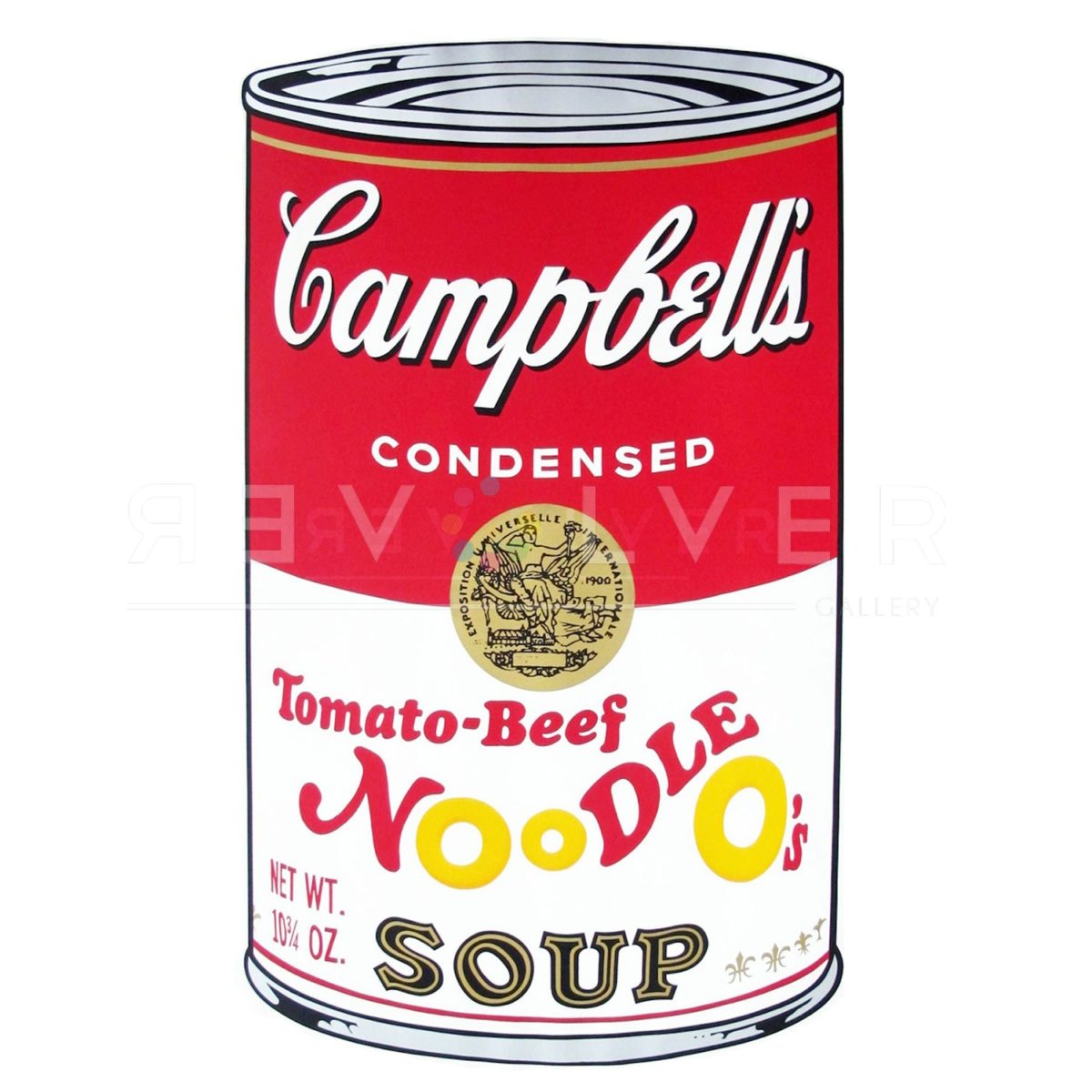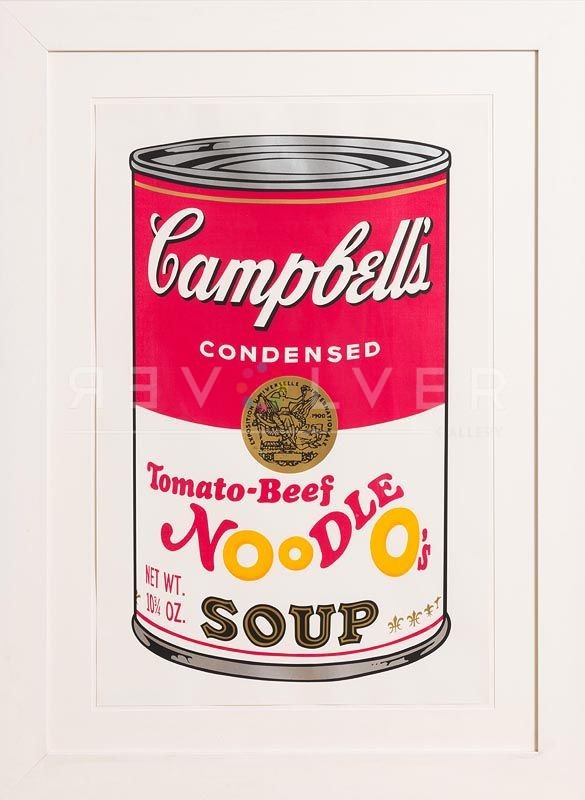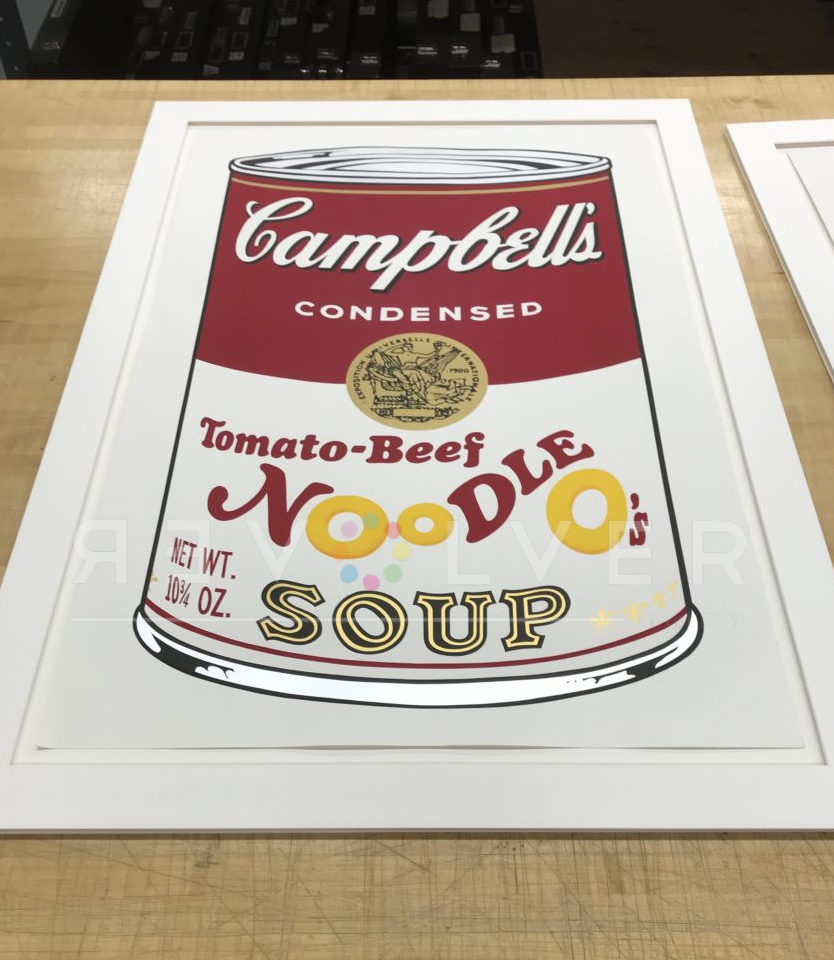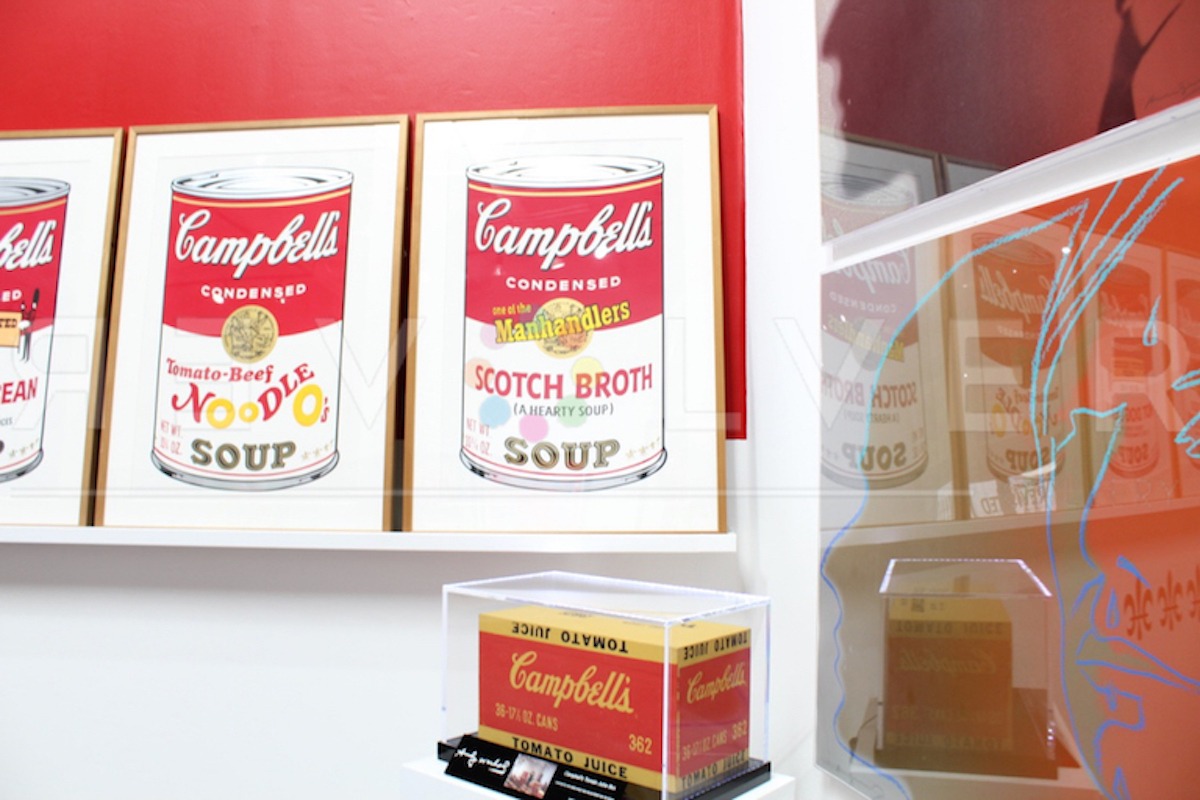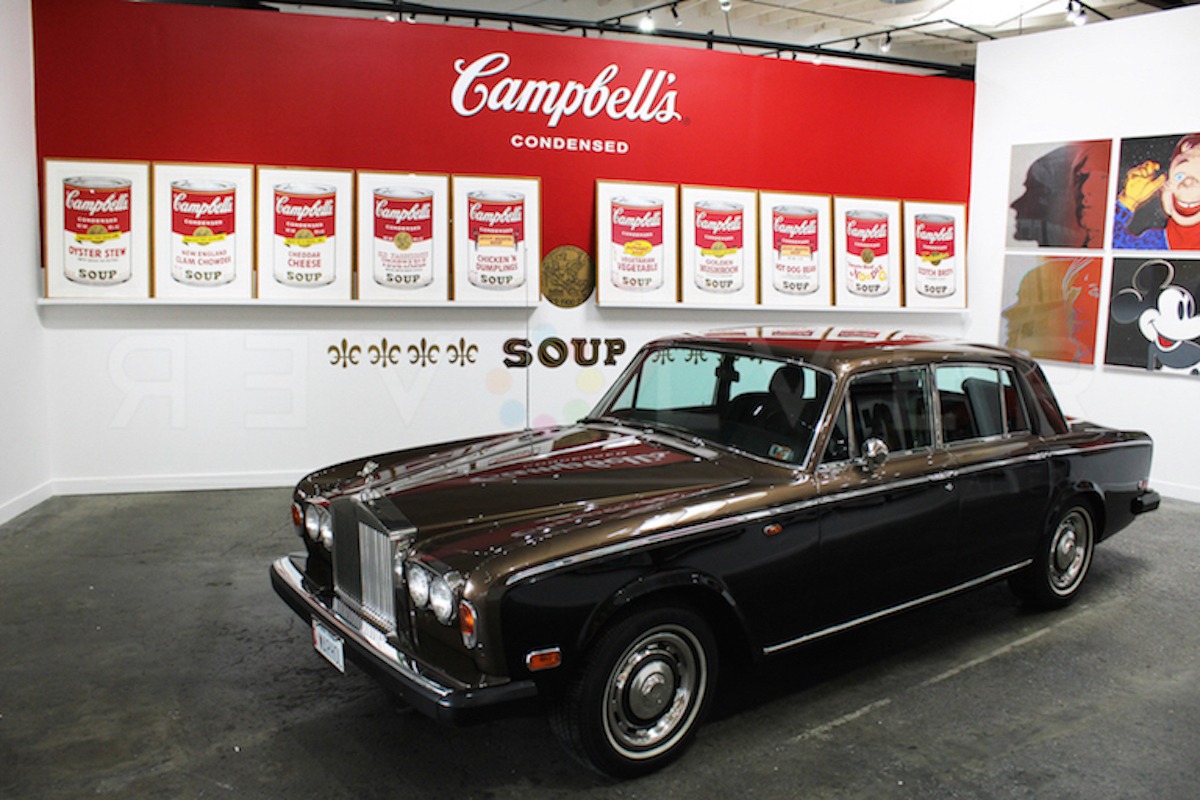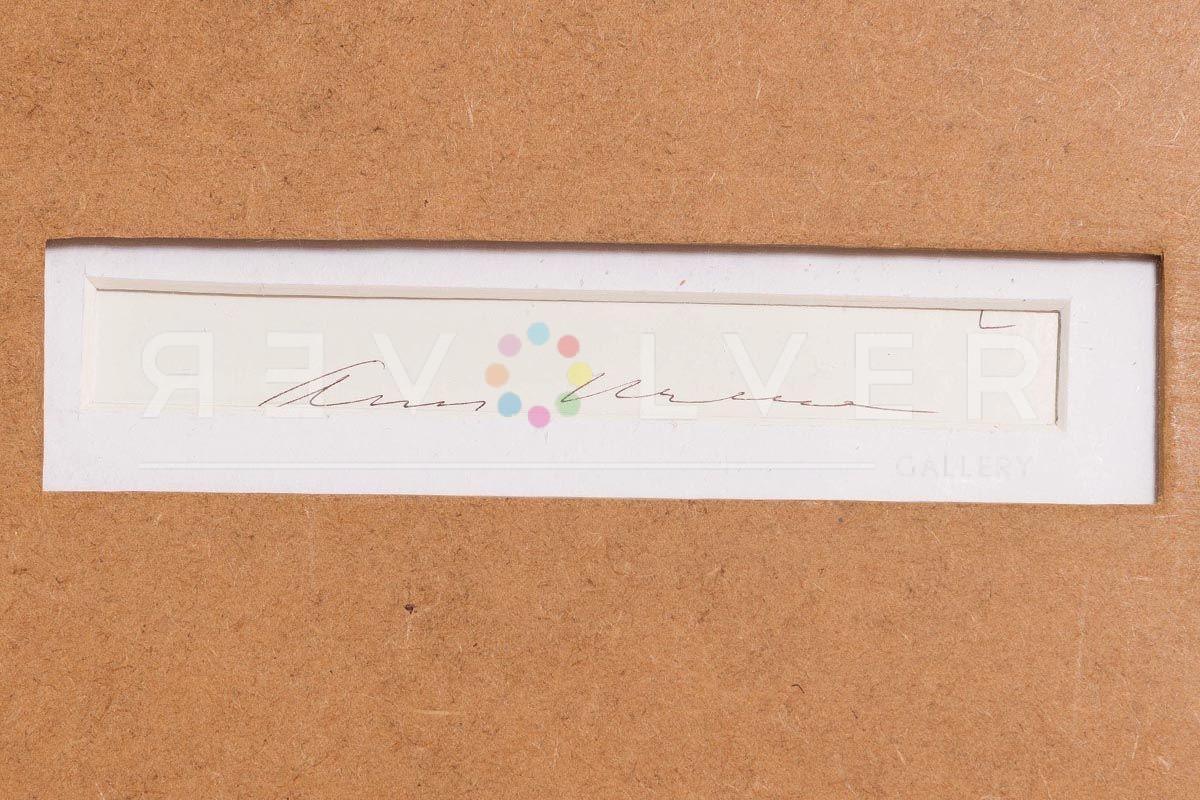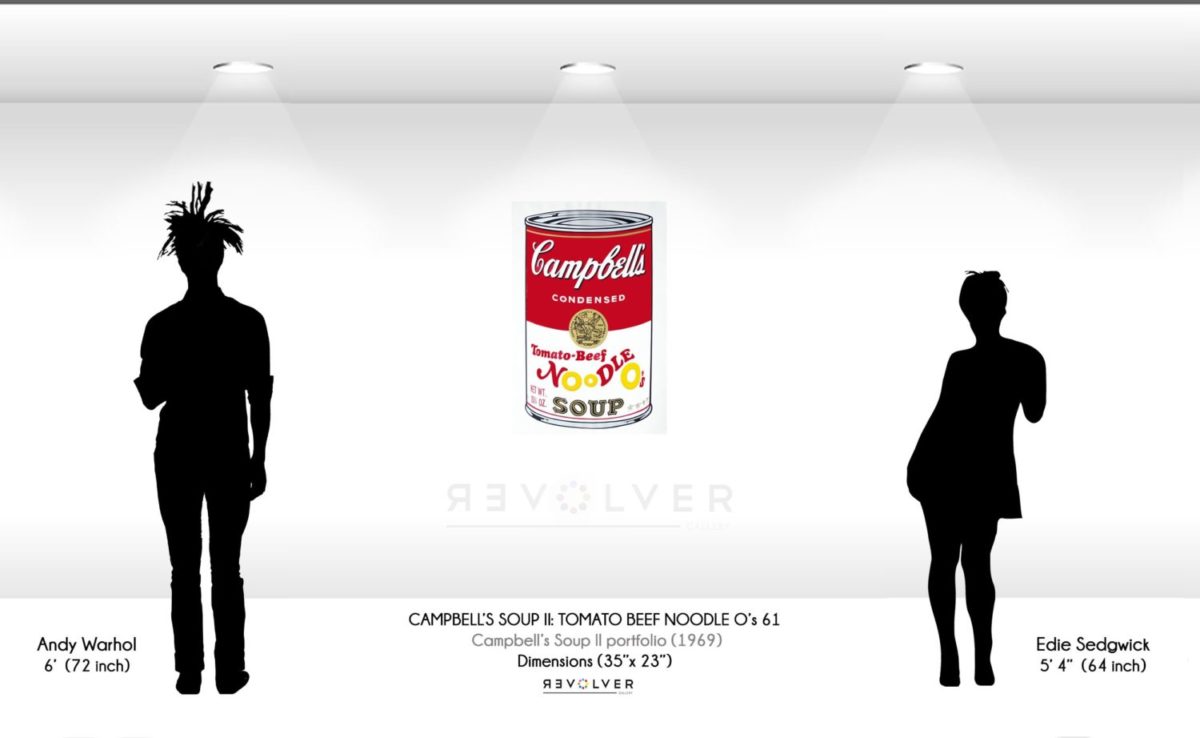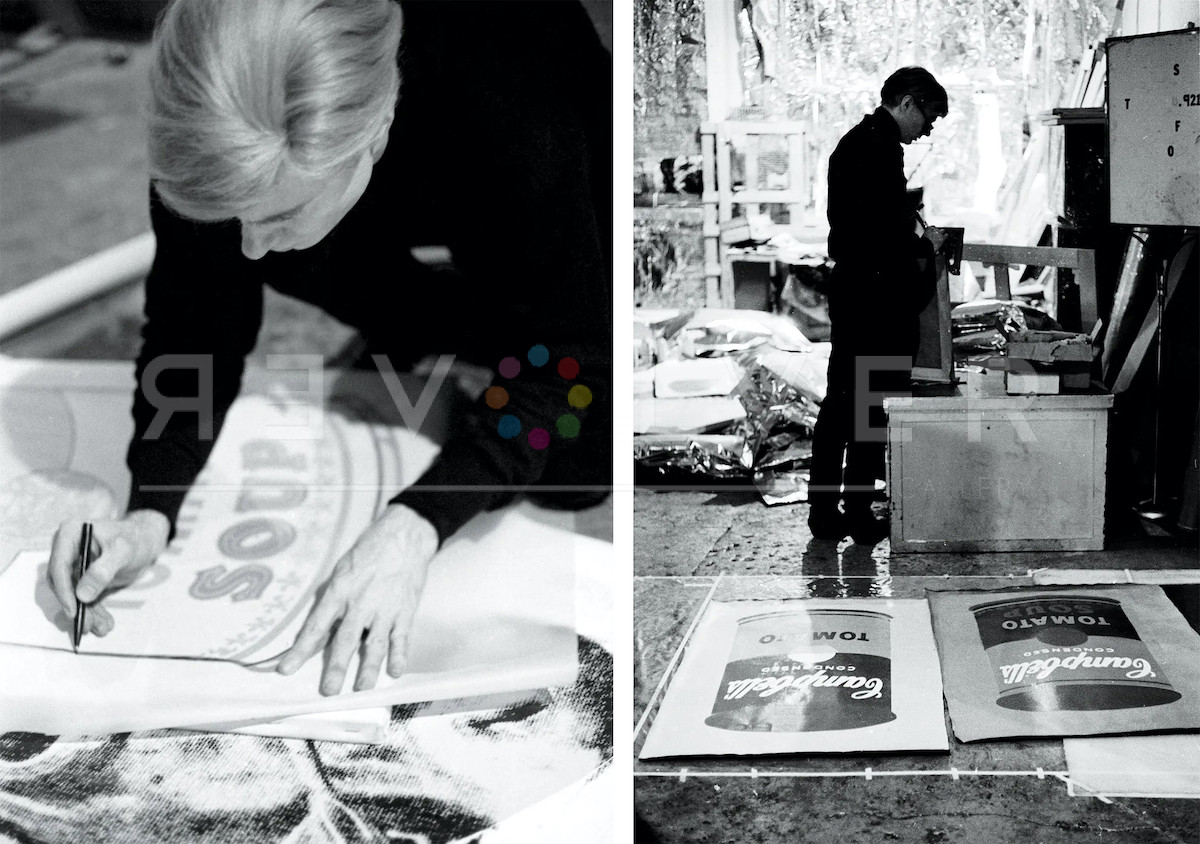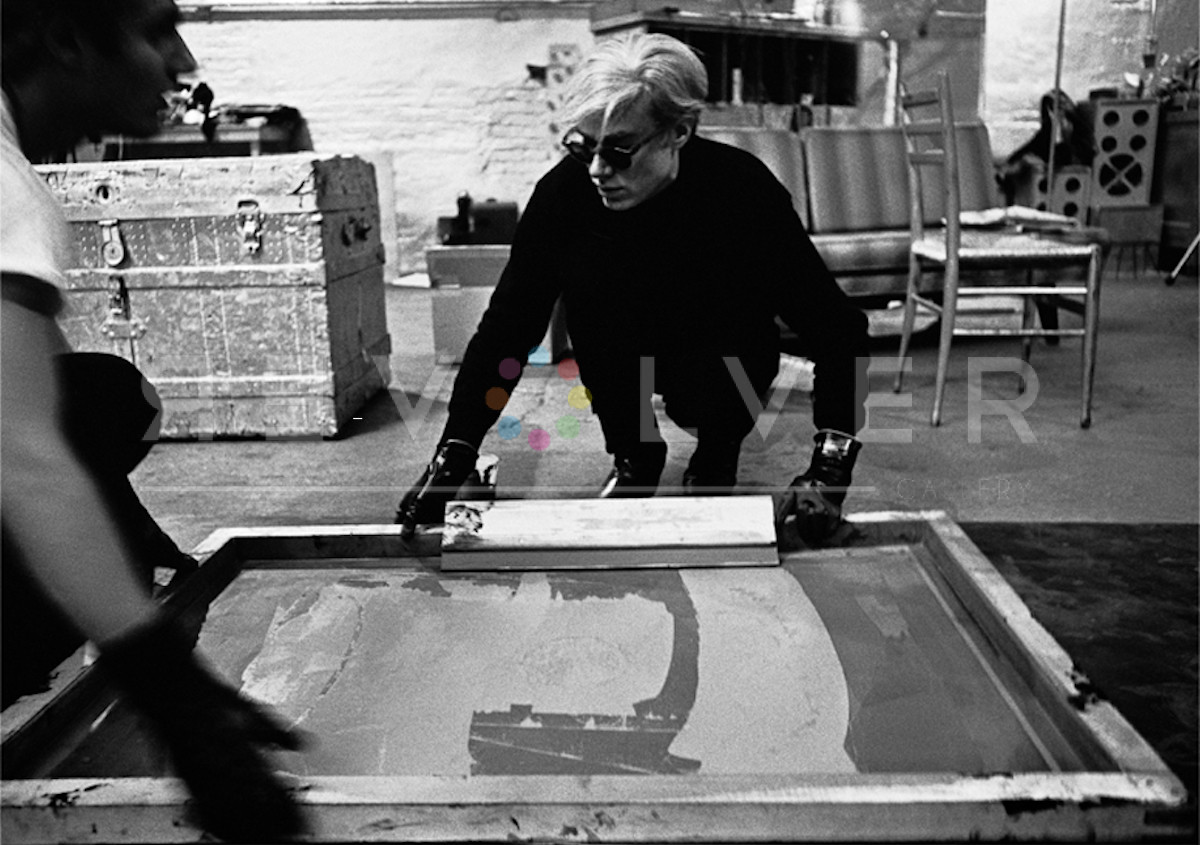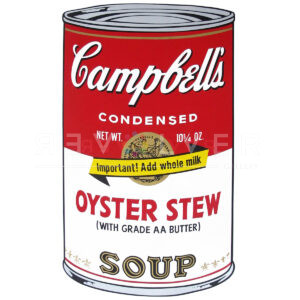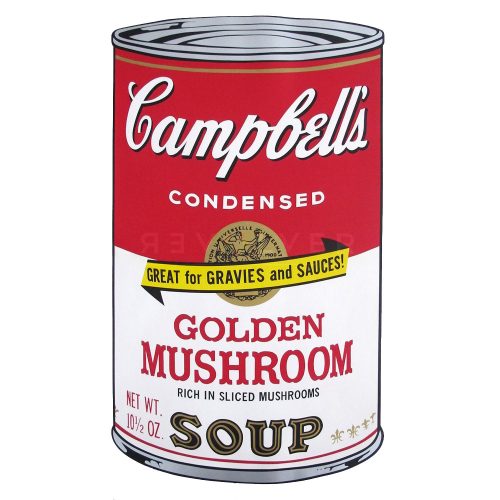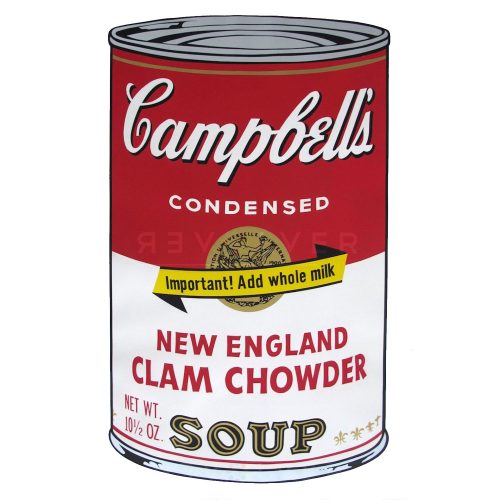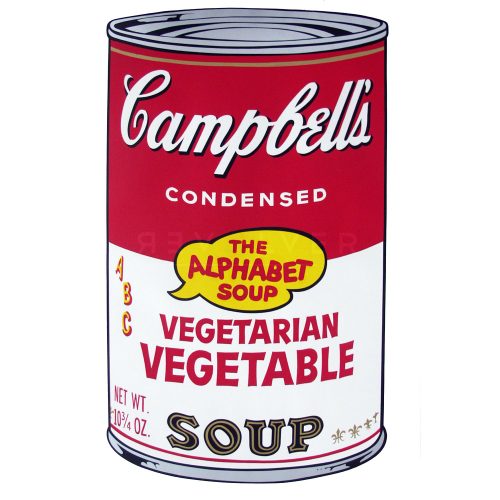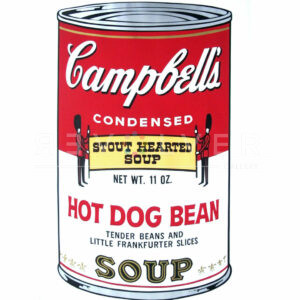Campbell’s Soup Cans II: Tomato-Beef Noodle O’s by Andy Warhol is a print from the Campbell’s Soup CansII portfolio. Warhol published this series one year after Cambpell’s Soup I, and six years after his original 32 Campbell’s Soups. Tomato-Beef Noodle O’s 61 is one of ten prints included in Warhol’s 1969 portfolio, each containing different flavors and names. Warhol’s signature pop-art style soup cans took the art world by storm, with his revolutionary design techniques and conceptual depth.
Not only did this new series contain a different array of flavors, but the labels also have additional illustrations. This new collection of soup can prints has the same design Americans know and love, but with the bonus of new graphics. In place of the traditional Campbell’s golden seal, the front of the can shows unique designs for each flavor. This particular print shows “Tomato-Beef Noodle O’s” written in a funky red and yellow font. This mundane, yet fun design of these soup can prints fit well into Warhol’s already existing portfolios, marking a development from his original soup can paintings.
Other works from this series include New England Clam Chowder 57, Hot Dog Bean 59, Chicken N’ Dumplings 58 and Vegetarian Vegetable 56. These unusual soups Warhol included in his second series are all real flavors of Campbell’s Soup. Each soup can which Warhol created for this second portfolio has its own unique label illustrations.
The Campbell’s Soup Cans II prints are some of the most iconic pop art images of the century, serving as a grande symbol of consumer culture. To create this famous design, Warhol appropriated well known objects and images of consumerism by turning them into fine art. His soup cans challenged what could be deemed socially and artistically acceptable. Not only did Andy have a clear fascination with consumer culture and its products, he also expressed his personal connection to the company. “I used to drink it [Campbell’s Soup]. I used to have the same lunch every day, for twenty years, I guess, the same thing over and over again.”
In 1968, Valerie Solanas shot Warhol, landing him in the hospital where vascular surgeon Giuseppe Rossi was on duty. Dr. Rossi performed a five-and-a-half-hour-long procedure on Warhol, repairing the damage done to the his body. Hours later, he successfully revived Warhol, saving the life of the famous artist. In an effort to repay him for his heroic work, Andy Warhol sent Dr. Rossi a selection of his prints. Andy Warhol’s Campbell’s Soup Cans II: Tomato-Beef Noodle O’s is one of the many prints that was gifted to the doctor. This one of a kind print with a unique history has been acquired by Revolver Gallery.
Warhol’s love for mass-production, advertisement, and Campbell’s soup cans all morphed together to create these portfolios. Although the Campbell’s soup cans are arguably some of his most notable works, the artist received some backlash after showcasing his original 32 Campbell’s Soup Cans series. Due to the unfamiliar subject matter of Warhol’s soup cans, some people questioned the significance of his work. Fifty-nine years after their original debut, people still may debate the artistic merit of the soup cans. Nonetheless, they quickly became some of the most treasured works of modern art.
Despite some of the initial criticism Warhol received after showing his Campbell’s Soup cans, the bold design launched his career after his first exhibition in 1962. Seven years later, works like Campbell’s Soup Cans II: Tomato-Beef Noodle O’s became a quintessential item of pop-art culture. Warhol created his original design for these soup cans just as the Pop Art movement emerged. His groundbreaking and bold work allowed the pop-art genre to enter the world of mainstream art. Still to this day, Warhol’s soup cans rule the pop-art world, with their bold design and revolutionary subject matter.
Photo Credits:
- Andy Warhol tracing Campbell’s Soup silkscreen, The Factory, New York City, circa 1965 © Estate of Nat Finkelstein © 2021 The Andy Warhol Foundation for the Visual Arts, Inc. / Licensed by DACS, London
- Andy Warhol and Gerard Malanga make a painting, 1964. Vintage gelatin silver print, 10¼ × 14¾ inches; 26 × 38 cm. Photo by Matthew Marks.
- Andy Warhol, 1964. Vintage gelatin silver print, 10¼ × 14¾ inches; 26 × 38 cm. Photo by Matthew Marks.

